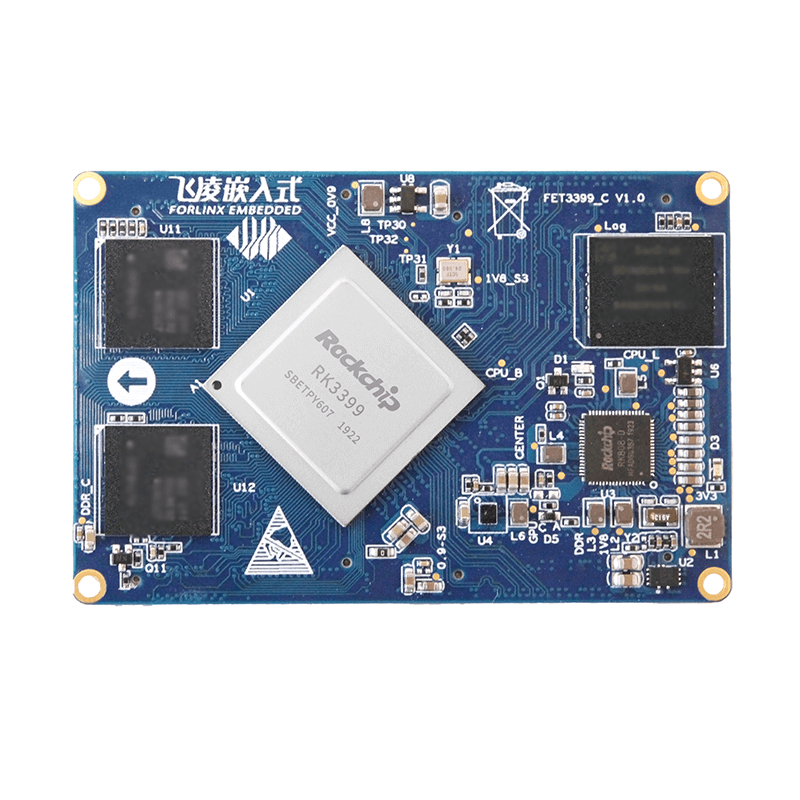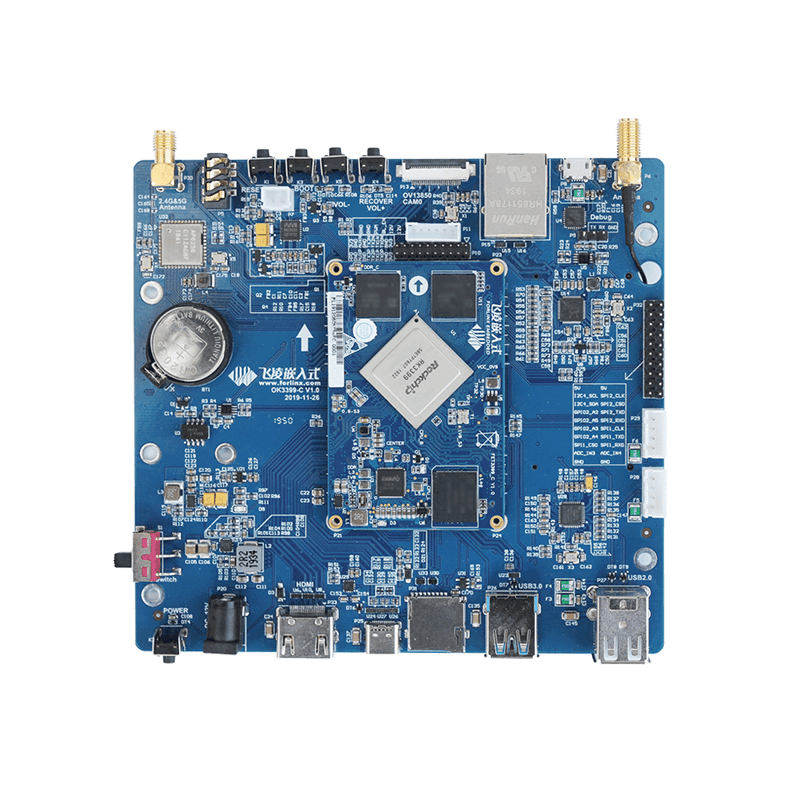
Introduction to RK3399's Features
RK3399 chip uses a six-core CPU and the GPU uses The Mail-T864, which is one of the most powerful six-core chips in the RK system. Using the new six-core super-performance RK3399 motherboard solution, compared to the common single-core, dual-core, four-core, six-core, eight-core program on the market, there is a qualitative leap in performance, can play a variety of formats ultra-high-definition 4K x 2K video, can handle complex interactive operations.
High stability
RK3399 in hardware, software, add their own unique technology to ensure product stability, can make the final product to reach 7 x 24 hours unattended.
High degree of integration
The RK3399 features a TG170-10 layer ultra-high density PCB board with gigabit Ethernet, WiFi, Bluetooth 5.0.1, 6W amplifier, and TF card Extensions, PCIE extensions, TYPE C, USB 3.0, RS232, built-in 4G module interface, HDMI input, HDMI output, LVDS, eDP, microphone, and more simplify the design of the entire machine. Ultra-thin motherboard design, can make the whole machine design more beautiful.
High scalability
RK3399, 4 USB port, 5 serial port, 7 I2C interface, 4 IO expansion port can expand more peripheral equipment.
Introduction:
FET3399-C core board with 2 ARM Cortex-A72 cores, main frequency 1.8GHz, 4 ARM Cortex-A53 core, main frequency 1.4 GHz; GPU with Mali-T864, openGL ES1.1/2.0/3.0/3.1, OpenVG1.1, OpenCL, DX11; On-board 2GB LPDDR3 RAM, 16GB eMMC ROM; With a variety of display interfaces, including HDMI2.0, MIPI-DSI, eDP 1.3, DP1.2, maximum resolution rate of 4K, support for dual-screen synchronous display, dual-screen asynchronous display, while providing a variety of peripheral interfaces, such as PCIe USB 3.0 Host, Type-C, MIPI-CSI, SPIF, 12C, SPI, UART, ADC, PWM, GPIO, I2S (support for 8 digital microphones) and Gigabit Ethernet. Suitable for self-service devices, edge computing, face recognition, 5G smart terminals, 3D printing, POS machines, 4K business display all-in-one machines, game boxes, TV-BOX, NAS, locomotives, thin clients, VOIP video conferencing, security/surveillance/police and IoT fields.
Overview of SoM RK3399
|
CPU |
RK3399 hexa-core, Big.Little architecture |
|
GPU |
3D graphical engine:
2D graphical engine: • maximum resolution: source 8192x8192, and target 4096x4096 |
|
VPU |
Decode:
Encode: |
|
RAM |
• 2GB(optional 4GB) |
|
ROM |
• 16GB(optional 32GB)
• eMMC 5.1 storage |
|
Working Temperature |
0℃~80℃ |
|
Dimensions |
46mm x 70mm |
|
Voltage Input |
12V |
|
OS |
Android 7.1.Linux* |
Functional Features
| Functional Interface |
Spec. |
|
Display |
dual-screen engine up to 4096x 2160 and 2560x 1600, can output from below ports: MIPI-DSI ≤2• CPU has 3 built-in MIPI PHY, MIPI0 can be only used as DSI, MIPI1 can be used as DSI or CSI, MIPI2 can be only used as CSI • each DSI port has 4 data lanes, can support data transferring rate up to 6.0Gbps • each DSI port can support output up to 1080P@ 60FPS • MIPI0 and MIPI1 combination can support output 2560x 1600@ 60FPS eDPx1• eDP V1.3 • RGB 6/ 8/ 10-bit • 4 data lanes, each 2.7/ 1.62Gbps • can support PSR DP x1• Display Port V1.2 • compatible with HDCP2.2(backward compatible with HDCP1.3) • only has one built-in DP controller, can output from Type-C* • support outputting up to 4Kx 2K@ 60Hz HDMI x1• HDMI1.4, HDMI2.0 • up to 18Gbps port trunks • up to 180P@ 120Hz, 4Kx 2K@ 60Hz, QXGA@ 120Hz • HDCP1.4/ 2.2 |
|
Audio |
I2S/PCM x3 |
|
Camera |
MIPI CSI ≤2 |
|
USB |
• USB Type-C x2(multiplexed with USB 3.0) |
|
USB OTG3.0 |
• USB OTG 3.0 x2( contains USB OTG 2.0 x2) |
|
USB 2.0 |
• USB 2.0 Host x2(separated, not multiplexed with 3.0) |
|
SD/MMC |
• SD/MMC x2 |
|
Ethernet |
• Gigabit Ethernet x1 |
|
SPI |
• SPI x5 |
|
UART |
• UART x5 |
|
I2C |
• I2C x7 |
|
PCIe |
•
PCIe x1 |
|
PWM |
•
PWMs x3 |
|
ADC |
•
ADC x5 |



